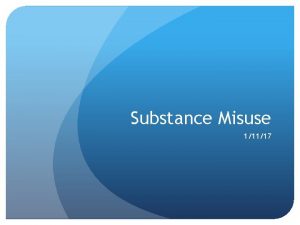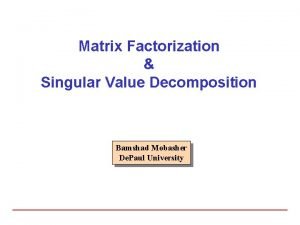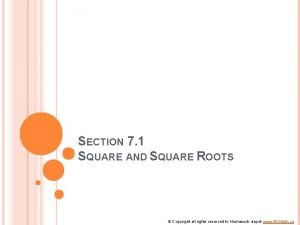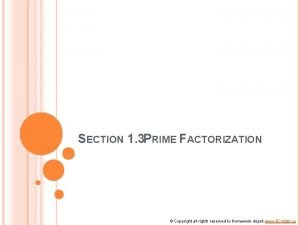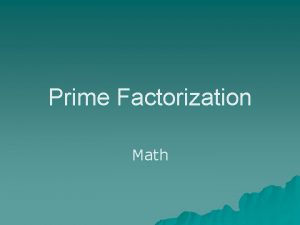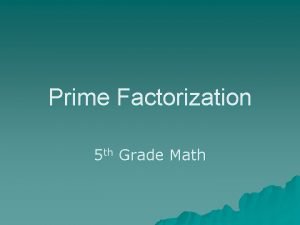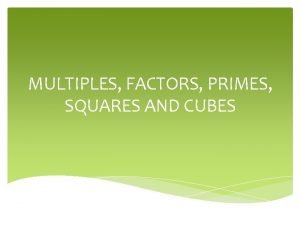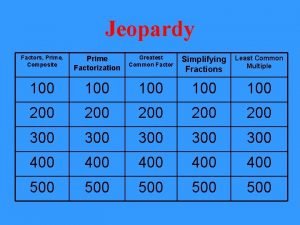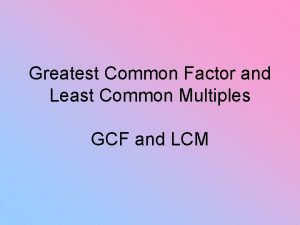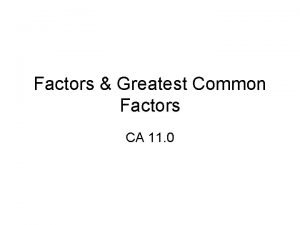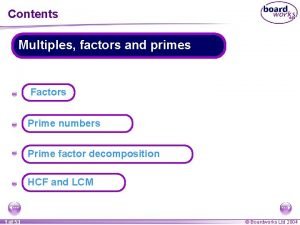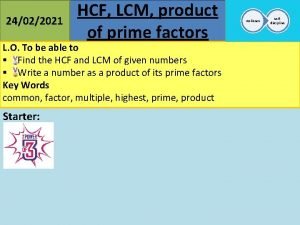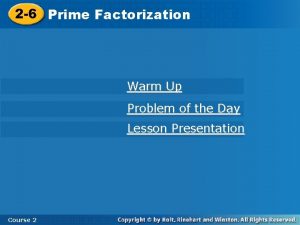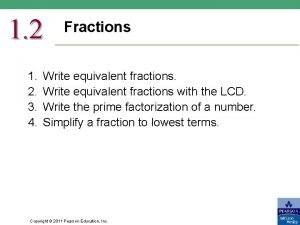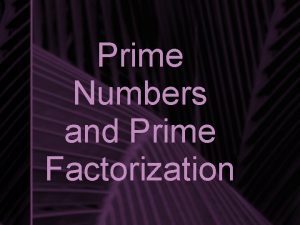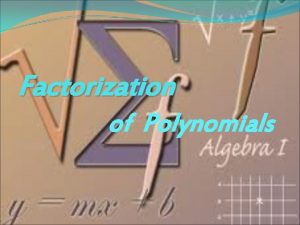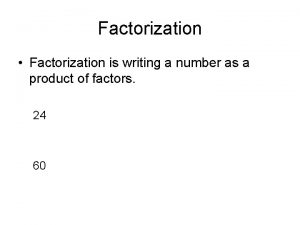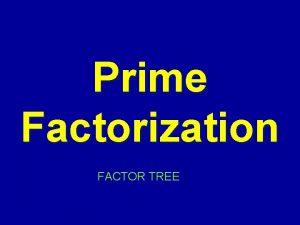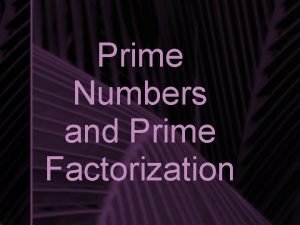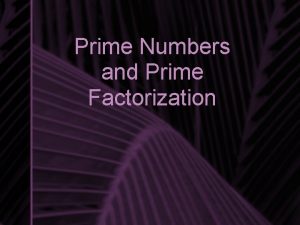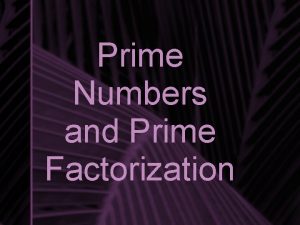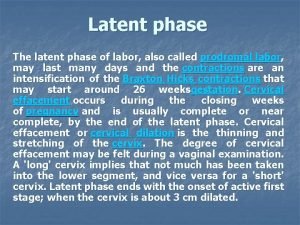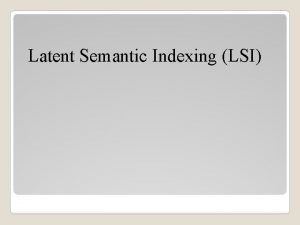Matrix Factorization Recovering latent factors in a matrix


















































- Slides: 50

Matrix Factorization

Recovering latent factors in a matrix n users m movies v 11 … … … vij … vnm V[i, j] = user i’s rating of movie j

Recovering latent factors in a matrix m movies y 1 a 2 . . … am x 2 y 2 b 1 b 2 … … bm . . n users x 1 ~ v 11 … … … vij … … xn yn … vnm V[i, j] = user i’s rating of movie j

KDD 2011 talk pilfered from …. .


Recovering latent factors in a matrix r m movies y 1 a 2 . . H … am x 2 y 2 b 1 b 2 … … bm . . n users x 1 W … … xn yn ~ v 11 … … … vij V … vnm V[i, j] = user i’s rating of movie j




for image denoising

Matrix factorization as SGD step size



Matrix factorization as SGD - why does this work? step size

Matrix factorization as SGD - why does this work? Here’s the key claim:

Checking the claim Think for SGD for logistic regression • LR loss = compare y and ŷ = dot(w, x) • similar but now update w (user weights) and x (movie weight)

What loss functions are possible? N 1, N 2 - diagonal matrixes, sort of like IDF factors for the users/movies “generalized” KL-divergence

What loss functions are possible?

What loss functions are possible?

ALS = alternating least squares

KDD 2011 talk pilfered from …. .




Similar to Mc. Donnell et al with perceptron learning

Slow convergence…. .







More detail…. • Randomly permute rows/cols of matrix • Chop V, W, H into blocks of size d x d – m/d blocks in W, n/d blocks in H • Group the data: – Pick a set of blocks with no overlapping rows or columns (a stratum) – Repeat until all blocks in V are covered • Train the SGD – Process strata in series – Process blocks within a stratum in parallel

More detail…. Z was V

More detail…. M= • Initialize W, H randomly – not at zero • Choose a random ordering (random sort) of the points in a stratum in each “sub-epoch” • Pick strata sequence by permuting rows and columns of M, and using M’[k, i] as column index of row i in subepoch k • Use “bold driver” to set step size: – increase step size when loss decreases (in an epoch) – decrease step size when loss increases • Implemented in Hadoop and R/Snowfall


Wall Clock Time 8 nodes, 64 cores, R/snow





Number of Epochs





Varying rank 100 epochs for all

Hadoop scalability Hadoop process setup time starts to dominate

Hadoop scalability

 Equation for specific latent heat of fusion
Equation for specific latent heat of fusion Middlesbrough recovering together
Middlesbrough recovering together Latent factors recommender system
Latent factors recommender system Matrix factorization
Matrix factorization Site versus situation
Site versus situation Are flowers biotic or abiotic
Are flowers biotic or abiotic Abiotic factors and biotic factors
Abiotic factors and biotic factors Abiotic vs biotic factors
Abiotic vs biotic factors Is a raspberry bush biotic or abiotic
Is a raspberry bush biotic or abiotic Site factors vs situation factors
Site factors vs situation factors Find the factors of 24
Find the factors of 24 Common factors of 10 and 20
Common factors of 10 and 20 Factors of 8-
Factors of 8- Factors of 145
Factors of 145 Write the exponent of 3 in the prime factorization of 162
Write the exponent of 3 in the prime factorization of 162 2352 prime factorization
2352 prime factorization Square 1 to 25
Square 1 to 25 120 prime factorization
120 prime factorization What's the prime factorization of 64
What's the prime factorization of 64 Prime numbers chart
Prime numbers chart 5x5^2 in index form
5x5^2 in index form 78 factors
78 factors Factor tree of 78
Factor tree of 78 Prime factorization quantum algorithm
Prime factorization quantum algorithm Which unit tiles are needed to complete the factorization?
Which unit tiles are needed to complete the factorization? Paths start and stop at
Paths start and stop at Highest common factor
Highest common factor Elementary scaling matrix
Elementary scaling matrix Prime and composite jeopardy
Prime and composite jeopardy Prime factorization of 40
Prime factorization of 40 Lowest common multiple of 80 and 60
Lowest common multiple of 80 and 60 Find hcf by prime factorisation method worksheet
Find hcf by prime factorisation method worksheet Lcm of 150 and 180
Lcm of 150 and 180 Gcf of 24 and 16
Gcf of 24 and 16 Highest common factor of 36 and 90
Highest common factor of 36 and 90 What is a composite number
What is a composite number What is the greatest common factor
What is the greatest common factor Factoring problem
Factoring problem List factors of 54
List factors of 54 Prime factorization of 200
Prime factorization of 200 Number 53
Number 53 360 prime factor tree
360 prime factor tree Find the cube root of 17576 by estimation method
Find the cube root of 17576 by estimation method Lu factorization
Lu factorization Prime factorization of 45
Prime factorization of 45 Prime factorization of 90
Prime factorization of 90 What is the prime factorization of 24
What is the prime factorization of 24 Factor tree of 48
Factor tree of 48 Sophie germain prime
Sophie germain prime 3 factors of 16
3 factors of 16 Prime factorization of 20
Prime factorization of 20

